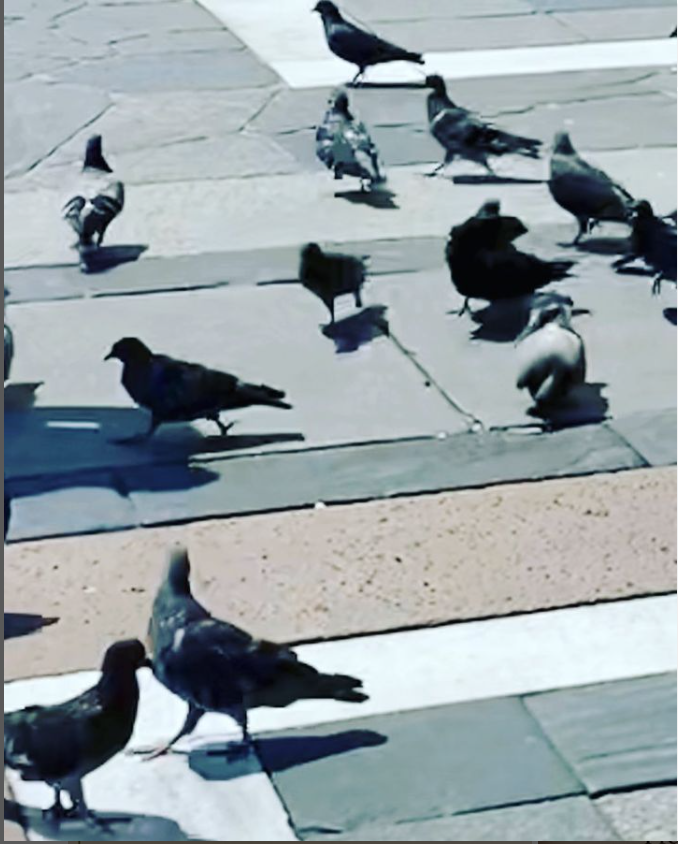July 2nd, 2023

We all know the story:
"Once there was a pig. He lived in a pig patch. He once heard the pig farmer say to his son, 'when pigs fly.' But the pigs wanted to defend his friend, the farmer's son. So he decided to fly. He wished on a star. The Star took eons to travel the light-years to earth to get the job done, and by that time the pig was hoary and haggard, a skeleton of the man he once was. He looked more like a rat. Then, the star came and said, "pig, eons have passed since you made this wish. Now, May your kin be wingèd." He grew wings, and became what looked like a flying rat. He was a city dweller, because he loved people, because his friend who inspired the wish had been a person. Everyone he knew was dead now, but that was ok. He had wings. The pigeon remained the most loving and friendly of birds." (pig.eons.uk)
But we all know the sad, dark truth of the Rats of the Sky.
We know that the sheer power of imagination caused the Rats to sprout wings and soar high to the stratosphere, and that when they got there they discovered their wings would last forever, and mourned their loss of Sewer Sight. They squeaked most robustly in protest and Rodential wailing, discovering that the transformation of their skeletal structure with the trip to the stratosphere had made their tratditional Rat-Songs virtually impossible. They had lost even their musical gifts.
And so they adapted. In the words of an ancient historical text written by Pigeon historian Bird the Ratical,
"And they dide lifte thaire cheary heds and did flapp thaire nufownèd wingges moste cooraygislee and
risolved, 'vurry welle. Withe thisse owre moar perssonable speciesal appearance, æt leest we shall nott
abe scornèd by monnecynd. And eek we maie forme nu alliancesse withe the benevolent handes who
fedd owre formre hoam, the suwer grayt.' And the Rattes did lairn the arte of street-mongering and
begin in a moar winsum regarde…"
The noble historian then goes on at length to inventory the details of the first great conquest from Sewer to Street. It took place in Paris in 1248, and it was a fearsome affair. The birds of Paris were angered at the insolence of a new bird trying to take the city, and threw them out of all nests and urban precipices. They forced them to the ground, but the Rats took joy in this, being closer to their kin and to their old ways. Yet still the birds of Paris bullied on. They called them Couchon-ions, or "little pigs," laughing at their fine cuisine which the Birds called simply slobbish. Eventually, in the multilingual and dialectical confusion of the day, the words shifted to Pig-ions, and ultimately pigeons.
Each Rat must decide for himself which tail is true. But, in the words of Bird the Ratical, "ye knowe weal enow, inn yore hart of harts, watt be trow and watt be legende."
We must take heart for the Rats, and incorporate their good into our vocabulary.
